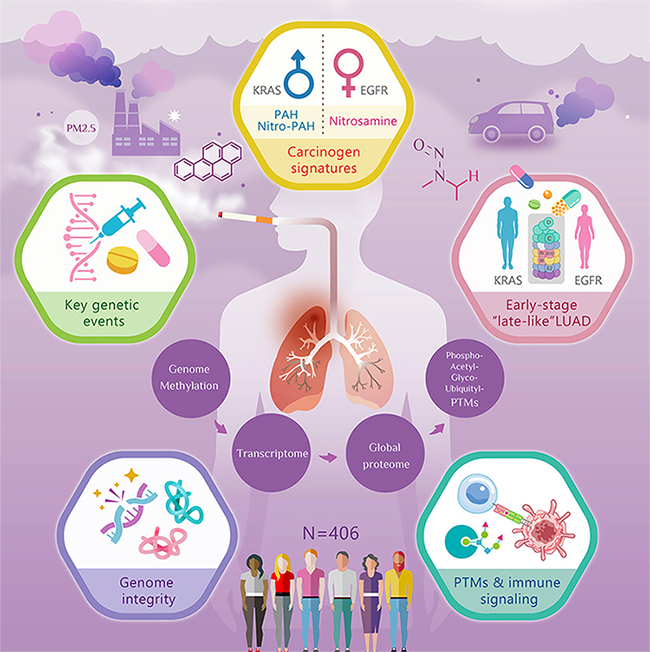Jurisdiction:
Taiwan, United States
Organ System:
Lung
Funding Organization:
- National Cancer Institute, USA
Research Organizations:
- Broad Institute of MIT and Harvard, USA
- Academia Sinica, Taiwan
- University of Michigan, USA
Principal Investigators
:- Michael A Gillette
- Yu-Ju Chen
- Marcin Cieslik
- D.R. Mani
- Steven A. Carr
- Alexey I. Nesvizhskii
- Hsuan-Yu Chen
- Sung-Liang Yu
- Pan-Chyr Yang
- Gee-Chen Chang
Publication:
External Links:
Lung adenocarcinomas (LUAD) are a pressing global health problem with enduring lethality and rapidly shifting epidemiology. Proteogenomic studies integrating proteomics and post-translational modifications with genomics can identify clinical strata and oncogenic mechanisms, but have been underpowered to examine effects of ethnicity, smoking and environmental exposures, or sex on this heterogeneous disease. This comprehensive proteogenomic analysis of LUAD tumors and matched normal adjacent tissues from 406 patients across diverse geographic and demographic backgrounds explores the impact of understudied driver mutations, prognostic role of chromosomal instability, patterns of immune signaling, differential and sex-specific effects of endogenous mutagens and environmental carcinogens, and pathobiology of early-stage tumors with “late-like” characteristics. Candidate protein biomarkers are proposed for unstable tumors with highly fragmented genomes and for carcinogen exposures, and a LUAD subtype-specific atlas of therapeutic vulnerabilities is presented. These observations and the associated data resource advance the objective of precision management strategies for this devastating disease.

